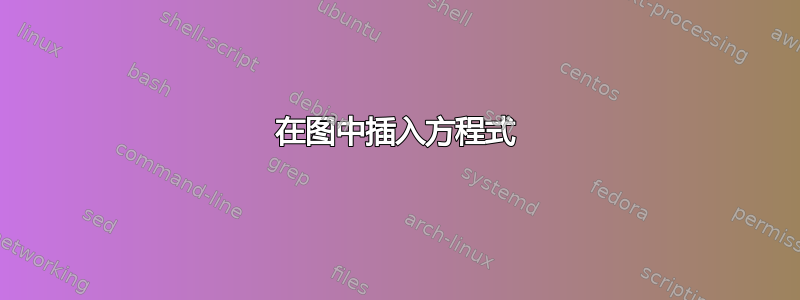
答案1
好吧,我例外地做到了这一点(到目前为止,你没有展示出任何努力,主要是为了好玩和锻炼:-)。
通过使用mathtools数学和纯粹的tikz其他方法:
\documentclass[tikz, margin=3mm]{standalone}
\usetikzlibrary{arrows.meta,
positioning,
shapes.arrows,
shapes.multipart}
\usepackage{mathtools}
\begin{document}
\begin{tikzpicture}[
node distance = 4mm and 3mm,
> = Straight Barb,
arr/.style = {single arrow, draw=blue!60, thick, %fill=blue!30,
single arrow head extend=1.5mm, shape border rotate=180,
minimum height=7mm, minimum width=8mm,
node contents={}},
NN/.style = {rectangle split, rectangle split parts=2,
draw=blue!60, thick,
rectangle split part fill={blue!40, white},
rectangle split part align={center,left}
},
prm/.style = {rectangle, draw=blue!60, minimum size=8mm},
]
\node (n1) [NN, below] {\nodepart{one} \bfseries\textcolor{SHA-1 Operation}
\nodepart{two} $\begin{aligned}
a_t & = \mathsf{ROTL}^5(a_{t-1}) + \\
& \qquad f_t(_{t-1},c_{t-1}) + e_t + W_t + K_t\\
b_t & = a_{t-1} \\
c_t & = \mathsf{ROTL}^{30}(B_{t-1})\\
d_t & = c_{t-1}\\
e_t & = d_{t-1}
\end{aligned}$
};
\coordinate[above=of n1] (aux1);
\coordinate[left =of n1] (aux2);
\coordinate[below=of n1] (aux3);
\path[draw=blue!70,->, semithick] (n1) -- (aux3) -| (aux2) node[left] {80}
|- (aux1) -- (n1);
% right perimeter
\node (n2) [arr,above right=of n1.two east];
\node (n3) [prm,right=of n2] {$W^t$};
\node (n4) [arr,below right=of n1.two east];
\node (n5) [prm,right=of n4] {$K^t$};
% equations below
\node[align=left, below = of aux3] {$\begin{aligned}
W_t & = \begin{cases*} xxxx & if $80>t\geq 16$ \\
yyyy & if $0 <t< 16$
\end{cases*} \\
K_t & = \begin{cases*} xxxx & if $80>t\geq 16$ \\
yyyy & if $0 <t< 16$ \\
zzzz & if $0 <t< 16$ \\
wwww & if $0 <t< 16$
\end{cases*} \\
f_t(b,c,d)
& = \begin{cases*} xxxx & if $80>t\geq 16$ \\
yyyy & if $0 <t< 16$ \\
zzzz & if $0 <t< 16$ \\
wwww & if $0 <t< 16$
\end{cases*}
\end{aligned}$
};
\end{tikzpicture}
\end{document}
方程是符号的。正确的变量你应该自己写出来。
答案2
你可以这样做:
1)tcolorbox第一个箱子的包装
2)tikz通用解决方案和形状的包——shapes.arrows对于粗箭头也需要 tikzlibrary(代码来自这里: https://tex.stackexchange.com/a/247875/120578经过@安德鲁)
3)amsmath数组包
4)可能需要caption包来包含图形或其他带有标题的环境,而这些标题不能包含在小页面中。
\documentclass{article}
\usepackage{tikz}
\usetikzlibrary{shapes.arrows}%for the blue arrows
\usepackage{amsmath}%For array
\usepackage{caption}%For including figures or other not accepted environments in minipage
\usepackage{tcolorbox}%For the colorbox
\usepackage{lipsum}%for pseudo-random text
\begin{document}
\lipsum[1]
\vspace{\baselineskip}
\noindent\begin{tikzpicture}
%Arrow style from here : https://tex.stackexchange.com/a/247875/120578
\tikzset{>=stealth,->,shorten >=2pt,looseness=.5,auto,shape border rotate=180,
fat arrow/.style={single arrow,
thick,draw=blue!70,fill=blue!30,
minimum height=13mm,minimum width=11mm}}
\coordinate(TopLeft);
\node[anchor=west,inner sep=0](First) at(TopLeft)
{\begin{tcolorbox}
[width=0.4\textwidth,title={Example for a box}]
\begin{align*}a_t&=S(x)+f(3\cdot t)-5\\
b_t&=(x-1)\cdot\frac{5}{t-4}
\end{align*}\end{tcolorbox}};
\coordinate (mbot)at (First.south);
\coordinate (mtop)at (First.north);
\coordinate (mleft)at (First.west);
\coordinate (mright) at(First.east);
\draw[thick,blue,->] (mbot)|-([yshift=-0.2cm]mbot)-|([xshift=-0.6cm]mleft)|-([yshift=0.5cm]mtop)-|(mtop);
\node (J)at ([xshift=1cm,yshift=0.6cm]mright)[fat arrow]{};
\node at ([xshift=1.2cm]J){$f_1(j)$};
\node (K)at ([xshift=1cm,yshift=-0.6cm]mright)[fat arrow]{};
\node at ([xshift=1.2cm]K){$\frac{m-1}{3}$};
\node[anchor=west] at ([yshift=-3cm]TopLeft) {\begin{minipage}{0.4\textwidth}\[\left[\begin{array}{ccc}3 &4 &f(x-2)\\
9 &-6& j+5\\
45 &-f_3(H+\alpha)
\end{array}\right.\]\end{minipage}};
\node[anchor=west,inner sep=0] at ([yshift=-5cm]TopLeft) {\begin{minipage}{0.8\textwidth}\begin{equation}\left[\begin{array}{ccc}3 &4 &f(x-2)\\
9 &-6& j+5\\
45 &-f_3(H+\alpha)
\end{array}\right]\end{equation}\end{minipage}};
\node[anchor=west] at ([yshift=-8.5cm]TopLeft) {\begin{minipage}{\textwidth}\begin{center}\captionof{figure}{My figure here}\includegraphics[width=3cm]{example-image-a}\end{center}\end{minipage}};
\node[anchor=west] at ([yshift=-10cm]TopLeft) {\begin{minipage}{0.3\textwidth}\[F(z)=0\;\;\text{(continue math)}\]\end{minipage}};
\end{tikzpicture}
\end{document}
输出:





